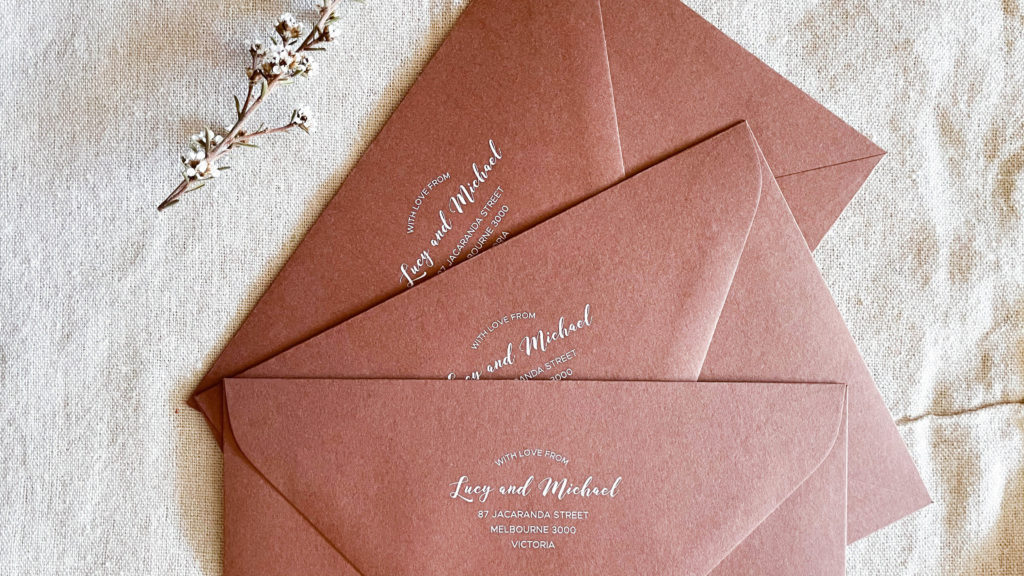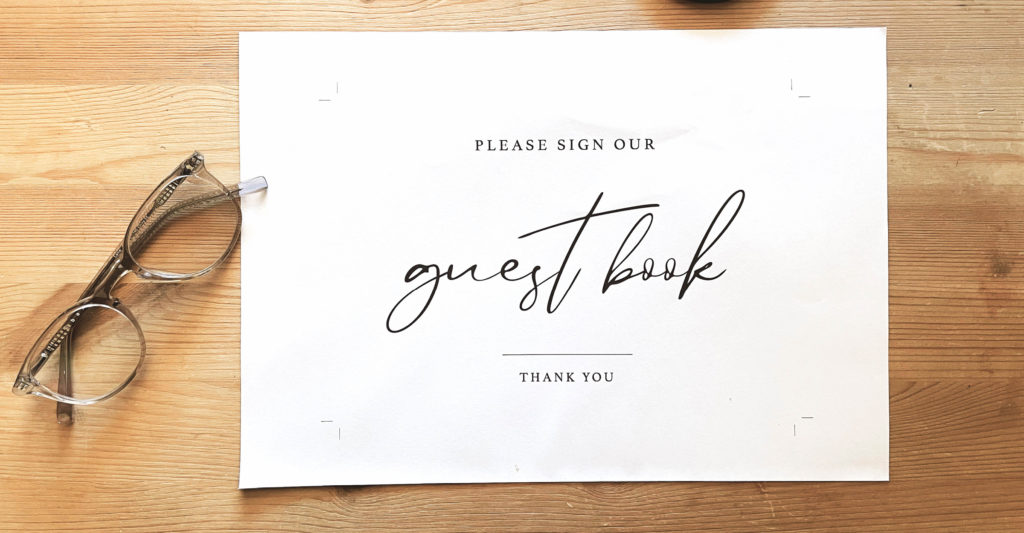This article was last updated on 15/11/2025.
This tutorial covers how to use our printable envelope liner templates, which are available for purchase in our shop. The example we’re using here is our free Baroque Bloom envelope liner template. If you haven’t already downloaded it, you’ll find it in this post.
Making your own envelope liners is honestly one of the easiest ways to prettify your stationery. It’s quick, affordable, and adds that little extra something to your invitations or cards. Plus, once you know how to do it, you’ll never send boring envelopes again.
What You Need
- Printable envelope liner PDF from The Hello Bureau
- A printer (inkjet or laser—laser is more economical if you’re printing a whole heap). Or, you can skip the home printing and print them at the self-serve printers at Officeworks or have them printed by a local print shop. It usually costs around $1.50 – $2.00 per A4 colour page.
- Envelopes (our templates are currently sized to fit envelopes from Peterkin and MOO)
- A4 (210x297mm) smooth paper (our templates only come in A4 page size)
- Scissors or craft knife, ruler and cutting mat
- Double-sided tape (we use this one from Spotlight) or a glue stick
- Optional: bone folder for creasing

Step-by-Step Instructions
1. Download and Print Your PDF
Start by downloading and opening your PDF file in any PDF reader. Print a test copy at 100% scale (or “actual size”) on A4 paper.
We recommend using smooth, uncoated paper for best results. Avoid heavily textured stock, as it can affect how well the liner folds and adheres.
Please note: Colours may appear differently from what you see on screen. Printer settings, paper stock, ink levels, and screen calibration can all affect the final output. If you’re unsure, we always recommend printing one copy first.

2. Cut Out the Liner
After printing, it’s time to cut out your liner. For the best results, use a combination of a craft knife and scissors:
- Use a craft knife and ruler to trim the straight edges cleanly.
- Switch to scissors for any curved or angled corners. This will give you more control and a smoother finish.
Tip: Cut just inside the printed guideline so the line doesn’t show on your finished liner.






3. Test Fit and Tape
Once you’ve cut out your liner, insert it into the envelope to make sure it fits. The top edge of the liner should sit just below the envelope gum. Keep in mind that gum lines can vary slightly between envelope batches, so don’t worry if the fit isn’t perfectly uniform — a little variation is completely normal.
Next, take out the liner and flip it over. Apply two strips of double-sided tape to the back of the flap section, one along each edge.
Note for glue users: If you’re using glue instead of tape, position the liner inside the envelope first, then fold the envelope flap to “set” the crease. Once it’s in place, carefully apply glue to the back of the liner flap, then press it up onto the envelope. This method helps prevent shifting and keeps the liner smooth.


4. Position and Stick
Slide the liner back into the envelope and adjust it until it’s sitting exactly where you want it. We recommend aligning the top edge just below the gum line and centred side to side. Our templates include roughly a 1cm margin around the edges to help with alignment.
Once you’re happy with the placement, hold the liner firmly in place with one hand, and with the other, peel off the backing from the double-sided tape on the flap.
Press the flap down to secure the liner in place.


5. Fold and Finish
To “set” the liner in place, fold the envelope flap down along its natural crease. This presses the liner into the correct shape and helps it move naturally with the envelope.
If you want a sharper fold, you can use a bone folder or the edge of a clean ruler to gently score the crease.
Remember to leave the rest of the liner loose — don’t tape or glue it down inside the body of the envelope. This allows it to move freely when the envelope is opened and closed.


Extra Tips
- Always test print first. If you’re not sure about your printer’s margins or paper thickness, do a quick test on plain paper before using your good stock.
- Don’t over-glue. If you’re using glue instead of tape, apply it sparingly to avoid wrinkling or buckling. We recommend using a glue stick rather than liquid glues, as wet adhesive can cause the paper to warp and may also cause water-based ink to run.
- Store flat. If you’re assembling liners in advance, store your envelopes flat and pressed under a book to help them stay crisp.
- Printing addresses: If you’re planning to print recipient addresses directly onto your envelopes, make sure to do that before attaching the liners. It’s much easier to run flat envelopes through a printer than ones with something already glued inside.
P.S. Need some addressing templates? Check out our envelope address templates to make the process quicker and easier. - Don’t stress the slight wonk. These are handmade — a little imperfect charm is part of the magic.
That’s it!
Congrats on making your own envelope liners! Your stationery is now dressed to impress. There’s something really special about adding a personal touch like this. Your recipients will absolutely notice the effort, and it adds a little moment of delight to their day before they’ve even opened the card.
If you’re feeling proud (and you should be), we’d love to see what you’ve made. Feel free to share your finished envelopes and tag us @thehellobureau on Instagram. We’re always thrilled to see your creativity in action!
—
Please note that some of the links in this post are affiliate links and any purchase made through the links will give us a small commission (at absolutely no extra cost to you). Please read our Affiliate Disclaimer for more info.




